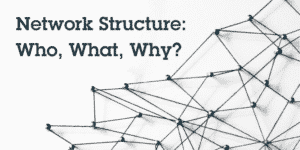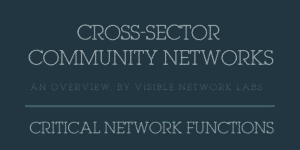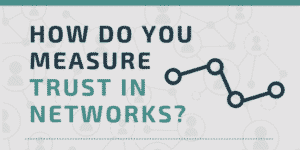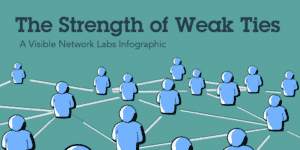Home » Infographics » Page 3

Understanding a few network structure metrics can really tell you a lot about the underlying relationships! Centrality, Connectivity, Bridging, and Cliques are four fundamental network science concepts – visit our Network Science 101 page for even more infographics, videos and articles on the subject! Build,

Collaboration is a broad term encompassing many kinds of connection, interaction, and partnership. While there are many different ways to measure this intensity, we use a four-level scale to avoid complicating things and make the survey easy for network members to answer. This ensures we

Cross-sector community networks are coalitions of various community groups from the public, private and non-profit sectors – they’re developing all over the nation, and world, and they’re changing the world too! This “network way of working” has grown in part due to cuts in public

Asking your partners how much they trust one another is unlikely to paint an accurate picture. At Visible Network Labs, we use a three-measure indicator to measure trust in community networks without bias. PARTNER CPRM users can include these metrics in their network management projects

The strength of weak ties is one of the oldest and most influential theories in the field of network science. This infographic explains the key points of this interesting concept. Created by Mark Granovetter in 1973, he suggested that, contrary to popular belief, we receive
Click one of the links below to download a free resource to strengthen your community partnerships, collaborative network, and strategic ecosystem.
Advice for building, managing, and assessing cross-sector networks or coalitions of partners.
A template to map the connections and interactions between key stakeholders in your community.
A worksheet and guide to help you think through and develop your network or ecosystem strategy.
Get monthly updates on VNL news, new research, funding opportunities, and other resources related to network and ecosystem mapping and management.